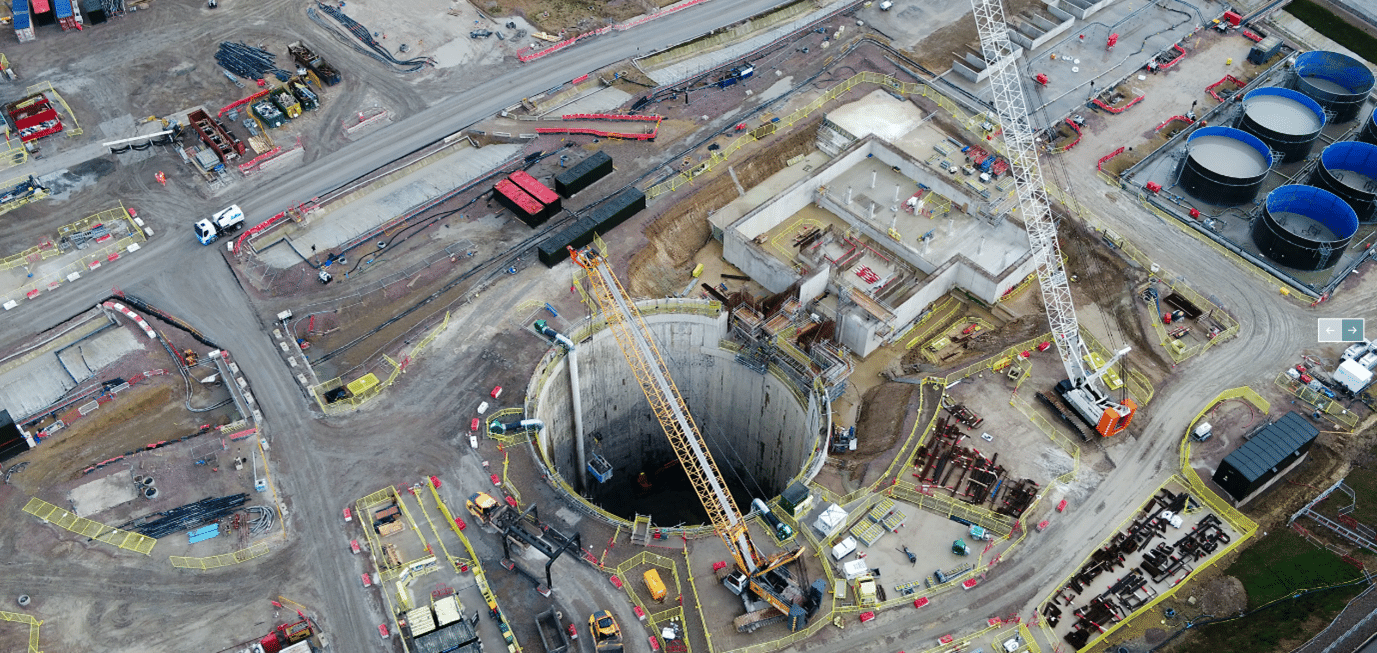Would you be prepared to dig a 1600-metre-deep hole in search of fertiliser? That’s exactly what one of the world’s most audacious mining projects is doing in the UK.
The modest name “Woodsmith Mine” may not instil a sense of edge-of-technology adventure, but it is set to become one of the more novel mining projects on the planet. Along the way it will create the deepest mineshafts in Europe, the longest tunnel in Britain, the lengthiest conveyor belt in the world, and generate an estimated £100bn for the UK economy.
Woodsmith, in Whitby, North Yorkshire, holds the world’s largest deposit of polyhalite – a hydrated sulphate of potassium, calcium and magnesium. K2Ca2Mg(SO4)4·2H2O, if you’re interested. It is classed as an organic fertiliser, low-carbon, needing only to be crushed and granulated, and therefore offers a sustainable solution to farming that skirts the environmental problems of many traditional fertilisers. And it does it in huge quantities.
Twin shafts will reach 1600 metres below the earth’s surface, while a 37km long concrete-lined tunnel containing a conveyor belt will transport the polyhalite to a handling facility at Teesside, removing the need for surface transport. In fact all major mine infrastructure is set to be buried underground in owner Anglo American’s resolve to reduce impact on the surrounding countryside.
This is perhaps not surprising as that countryside is the famous upland glory of the North York Moors National Park, and locals have not always been enamoured of the project. Last year they continued their objections by resisting plans to build temporary accommodation for workers.
Investment and timeline
Nonetheless, others have welcomed it. The project will create around 1600 jobs in an area where employment is not always easy to find. And it will bring millions to the region. Following a £400 million investment in 2022, Anglo American recently announced the intention to spend £650 million in 2023, with another £800 million per year for the three following years to hit Woodsmith’s 2027 target of delivering polyhalite.
Earlier this year the CEO of Anglo American’s Crop Nutrients business, Tom McCulley, declared that the tunnel was now over the half-way mark, an intermediate shaft was complete, and the two main shafts were proceeding well. The intention was “to reimagine mining to improve people’s lives. This is a mining project that has been designed like no other.”
Meanwhile the polyhalite can continue its patient wait. It has already been there for 260 million years. And that modest Woodsmith name should bring a warm glow to geologists everywhere. In 2017, Woodsmith was christened after two of the first geologists to work on the project – Peter Woods and Frederick Smith.
One more thing
Uncommon though polyhalite might be, it doesn’t even begin to stretch the boundaries of the world’s rarest mineral. But this might…
Fingerite was once described as the “Perfect Storm” of mineralogical rarity. It’s only found at the summit of El Salvador’s Izalco volcano; requires a combination of already very rare elements; and needs to be in the presence of exactly the right proportion of vanadium and copper in order to form in the crater’s fumaroles. And when it rains, the rare, black, near-mythological mineral just washes away. Discovered by and named after American mineralogist Dr Larry Finger in 1985.





